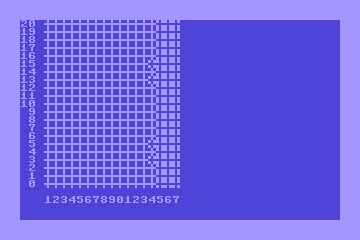
Block allocation map
Encyclopedia

Data structure
In computer science, a data structure is a particular way of storing and organizing data in a computer so that it can be used efficiently.Different kinds of data structures are suited to different kinds of applications, and some are highly specialized to specific tasks...
used to track disk blocks that are considered "allocated" or "free for writing."
Very rapid file access was made possible by consulting a Block Allocation Map only when it absolutely had to (that is, when writing), and ignoring it when reading. This arguably made writing to the disk more time consuming than reading. Nonetheless, the difference between reading and writing was negligible when taking into account the time involved waiting for the medium to speed up, and synchronize into position. Regardless of whether the medium was a 5.25 inch floppy diskette, or a 3.5 inch 'semi-rigid' diskette, most of the time was spent waiting for the medium to get into place before reading or writing was suitable.
In terms of Commodore Business Machines
Commodore 128
The Commodore 128 home/personal computer was the last 8-bit machine commercially released by Commodore Business Machines...
compatible Disk Drives, the BAM was located at a different physical track and sector on each of the Commodore 1541
Commodore 1541
The Commodore 1541 , made by Commodore International, was the best-known floppy disk drive for the Commodore 64 home computer. The 1541 was a single-sided 170 kilobyte drive for 5¼" disks...
, Commodore 1571
Commodore 1571
The Commodore 1571 was Commodore's high-end 5¼" floppy disk drive. With its double-sided drive mechanism, it had the ability to utilize double-sided, double-density floppy disks natively. This was in contrast to its predecessors, the 1541 and 1570, which could fully utilize such disks only if the...
, and Commodore 1581
Commodore 1581
The Commodore 1581 is a 3½ inch double sided double density floppy disk drive made by Commodore Business Machines primarily for its C64 and C128 home/personal computers. The drive stores 800 kilobytes using an MFM encoding but format different from both MS-DOS , and the Amiga formats. With...
disk drives. It is not the same thing as a simple bitmap because it actually involves a series of 1 byte counters (denoting how many blocks are free on that track) and a bitmap (which sectors on that track are allocated, and which are free).

